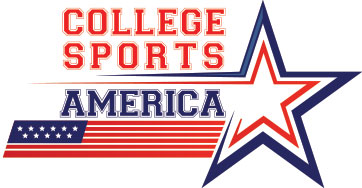Soccer Scholarships
Soccer is definitely the most up and coming college sport in the US. In the women’s game almost every successful player has chosen the college route, whilst for men this path is becoming more and more popular, mainly due to the fact that it has become extremely difficult to make it in the professional ranks at the relatively young age of age 18 or 19 without previous exposure to the game in a college environment . A significant proportion of all American national team players are ex-college soccer graduates, and currently more and more players in the English Premier League and the German Bundesliga played college soccer before starting their professional careers.
Am I eligible?
Having a high enough GPA or SAT/ACT score is the most overlooked concept by student athletes looking to be recruited. You can be playing for the FC Barcelona or Bayern Munich’s youth academy and have represented your country at the national level, but if you do not have the right grades you simply will not be admitted. If you do not have high enough grades to compete within the NCAA you will be what is called a “non qualifier” and you will either need to improve your grades or attend an NJCAA college for two years to obtain your associate’s degree. Once you have done this you can then transfer to an NCAA school where you will have more experience and be ready to compete at the NCAA level, whilst obtaining your bachelor’s Degree. The College Sports America team has a lot of experience with this and will guide you through the whole process.
How the season looks
The Soccer season starts and finishes in one very busy Fall semester. Each team will play between 20-30 games, depending if they make it to the national tournament. A rigorous training program will start in early August and matches will begin in late August. The team will be on the road travelling once or twice a week to play different teams. The season ends after the national tournament, which always takes place in early December and is even televised to many viewers on national television.
The Spring semester is where the teams will work very hard with their training staff and build on their strength and endurance. The NCAA have now allowed teams to play matches against other colleges in the Spring, but these results will not count towards a team’s record
Scholarships
The scholarship situation in soccer is probably the most favourable of all the sports because of the availability of teams and choice of possible scholarship options. For instance, the scholarship limit in division 1 women’s soccer is 14 scholarships per team, which means that there are plenty of full scholarships available for the right player.
Attendance
Attendance has also constantly risen in the last few years, and today there are about 40 teams averaging more than 1000 spectators per game in NCAA Division 1. The current attendance record for a single match took place back in 2010, when almost 16000 fans attended the game between UC Santa Barbara and UCLA. Furthermore, more and more TV networks have chosen to add college soccer games to their program, continuing the increase of college soccer’s exposure in the US.
Here are some more important facts about college soccer and soccer scholarships:
- Number of NCAA Div 1 soccer teams: Men 205, Women 332
- Number of NCAA Div 2 soccer teams: Men 211, Women 263
- Total Number of soccer teams (all divisions): Men 1399, Women 1562
- Total number of college soccer players: Men c.39000, Women c. 38000
- Scholarship limit per team: D1 Men: 9.9, D1 Women: 14, D2 Men: 9, D2 Women: 9.9, NAIA Men & Women: 12, NJCAA Men & Women: 18
- Former college soccer players: Eric Wynalda, Kasey Keller, Brad Friedel, Brian McBride, Carlos Bocanegra, Clint Dempsey, Neven Subotic, Vedad Ibisevic, Hope Solo
